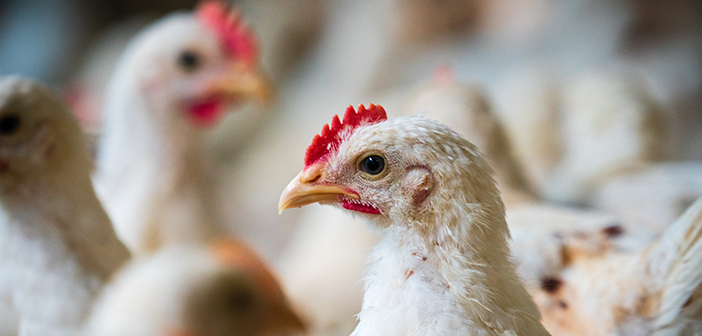The Association of Poultry Processors and Poultry Trade in the EU Countries (AVEC) has published a new study analysing in depth the additional costs and likely implications of adopting the European Chicken Commitment (ECC), also known as the Better Chicken Commitment (BCC).
Numerous companies across Europe, spanning from retailers to restaurants and catering businesses, have already signed up to the BCC, a framework of standards promoted by animal welfare NGOs, which aims to enhance animal welfare and exceeds current EU legislation. The BCC commits its signatories to apply several requirements such as the use of slower-growing chicken breeds, a lower stocking density, and the use of enrichment tools, to 100% of their fresh, frozen and processed poultry supply chain by 2026.
As BCC compliance progresses, crucial questions regarding its environmental implications and its effects on chicken meat production remain unanswered. AVEC has now commissioned a comprehensive impact study examining the potential consequences of fully transitioning from current EU chicken meat production to BCC standards, conducted independently by RSK ADAS Ltd (ADAS) – a consultancy firm specialising in agriculture.
“The unique aspect of this study lies in the emphasis placed on calculating costs per kilogram of meat, unlike previous research focused solely on the consequences for live birds or liveweight, which doesn’t accurately reflect market realities since we sell meat, not live animals,” said Birthe Steenberg, AVEC’s secretary general. Jason Gittins, Technical Director for livestock at ADAS, said “Due to differences in meat yields between standard and BCC production, earlier studies often underestimated the true impact of switching to BCC standards”.
The ”Costs and Implications of the European Chicken Commitment in the EU” study finds that fully transitioning to ECC standards would result in:
An additional production cost of 37.5% per kilogram of meat, a 35.4% increase in water consumption, equating to an additional 12.44 million cubic meters annually, a 35.5% increase in feed consumption, amounting to an additional 7.3 million tonnes, a 24.4% rise in greenhouse gas emissions per kilogram of meat produced, a reduction of 44% in the total meat produced compared to standard production methods at present in existing EU growing space (>30kg/m²), and the necessity to construct 9,692 new poultry houses, with an estimated cost of €8.24 billion, to maintain current production levels.
These effects on production would inevitably lead to higher prices that could exclude a large proportion of consumers from buying chicken meat or drastically increase imports from third countries with lower animal welfare standards.
AVEC’s President, Gert-Jan Oplaat, emphasised the importance of consumer choice and informed decision-making: “While the BCC aims to improve animal welfare, it is crucial to recognise that these improvements come with significant economic and environmental implications. Knowing that EU poultry consumption is predicted to grow in the EU in the next 10 years, consumers should have the choice to select higher welfare products if they wish, but it’s crucial that standard, affordable options remain available”.


